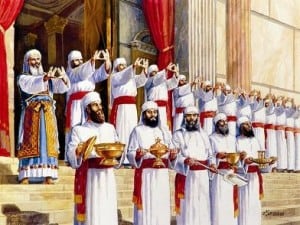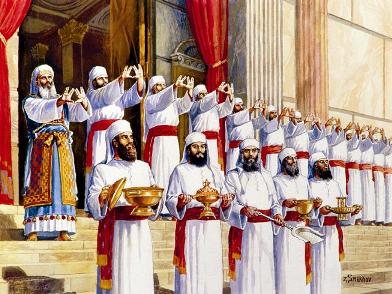Nasso (Numbers 4:21–7:89) — What is the difference between blessing and prayer? What can we do for G-d that would be original and unique? Is that impossible?
A total of 8,580 Levite men between the ages of 30 and 50 are counted in a tally of those who will be doing the actual work of transporting the Tabernacle.
Why must only the Levites do this work?
Why was their work so compartmentalized?
G‑d communicates to Moses the law of the Sotah, the wayward wife suspected of unfaithfulness to her husband.
Is this a law relating to the sins of the woman or is the sins of the man found here as well?
Also given is the law of the Nazir who forswears wine, lets his or her hair grow long, and is forbidden to become contaminated through contact with a dead body.
What can we learn from the fact that this law comes right after the wanton woman?
 Aaron and his descendents the kohanim are instructed on how to bless the people of Israel.
Aaron and his descendents the kohanim are instructed on how to bless the people of Israel.
Why are the kohanim given that task?
What does that teach us about blessings?
The leaders of the twelve tribes of Israel each bring their identical offerings for the inauguration of the altar.
Although they are identical, what does the torah’s repetition of each one teach us about offerings and implies why they are not identical?
Listen to this week’s podcast:
